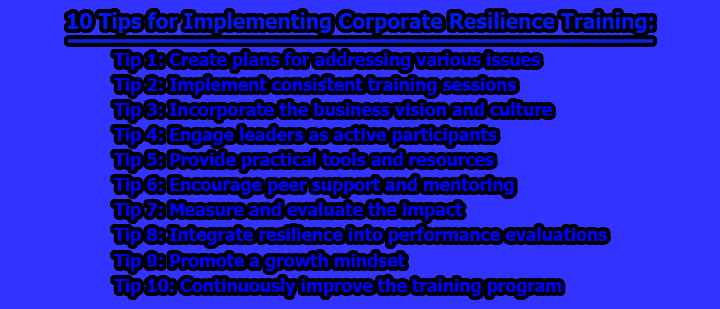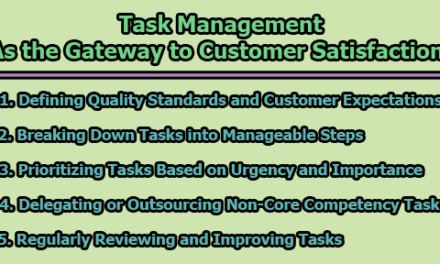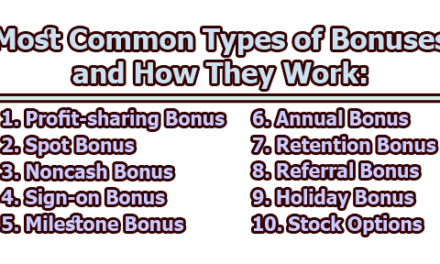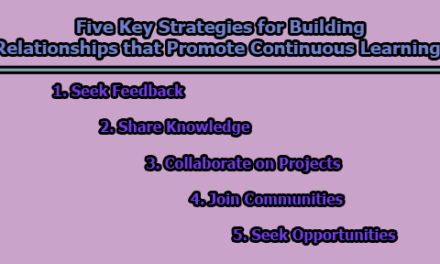In today’s rapidly changing business landscape, resilience has become a critical trait for both individuals and organizations to thrive. The ability to adapt, bounce back from setbacks, and maintain productivity during challenging times has proven to be a defining factor in long-term success. Corporate resilience training is a powerful tool that equips leaders and team members with the skills and mindset needed to navigate uncertainties and emerge stronger. In this article, we will explore the importance of corporate resilience training, its components, and 10 tips for implementing corporate resilience training.
Understanding of Corporate Resilience Training:
Corporate resilience training is a structured and targeted development program designed to equip employees and leaders with the skills and mindset needed to navigate adversity, uncertainty, and change effectively. This specialized training aims to build resilience at both individual and organizational levels, fostering the ability to bounce back from setbacks, maintain productivity during challenging times, and embrace continuous growth. Through a combination of workshops, interactive exercises, and practical tools, corporate resilience training focuses on promoting employee well-being, enhancing self-awareness, fostering teamwork and collaboration, instilling confidence, and encouraging a tenacious approach to problem-solving. By investing in corporate resilience training, organizations create a culture of resilience that empowers their workforce to adapt, thrive, and remain agile in the dynamic and evolving business landscape.
Importance of Corporate Resilience Training:
Corporate resilience training is a critical aspect of any successful organization, offering numerous benefits that contribute to the overall well-being and productivity of the workforce. Let’s delve into the importance of corporate resilience training:
a) Leaders model resilience to others: In any organization, leaders set the tone for the company culture and employee behavior. When leaders demonstrate resilience in the face of challenges, they become powerful role models for their teams. Seeing leaders navigate obstacles with a positive attitude and effective problem-solving skills encourages employees to do the same. This fosters a culture of resilience that permeates throughout the organization, leading to increased employee engagement and a higher level of commitment to achieving shared goals.
b) Team members can strengthen relationships: Resilience training often involves team-building exercises and communication workshops. Through these activities, team members learn to trust one another, collaborate effectively, and offer support during tough times. When individuals feel connected and supported by their colleagues, they are more likely to bounce back from setbacks and work cohesively to find solutions. Strengthening interpersonal relationships within teams also enhances creativity, innovation, and overall job satisfaction.
c) Resilience can improve productivity: In a rapidly changing business environment, disruptions and setbacks are inevitable. However, resilient individuals and teams can quickly adapt to changes, learn from failures, and continue to perform at their best. Rather than getting demoralized by challenges, resilient employees view them as opportunities for growth and development. Consequently, their ability to maintain productivity during challenging times contributes to the overall stability and success of the organization.
d) Training allows staff to be independent: Resilience training equips employees with essential life skills that foster independence and self-reliance. When individuals develop a strong sense of resilience, they are better equipped to handle stress, solve problems, and make decisions autonomously. Empowering employees to be independent thinkers and problem solvers not only reduces the burden on management but also enhances the organization’s agility in responding to various situations.
Components of Corporate Resilience Training:
Corporate resilience training encompasses various components that collectively contribute to building a resilient and adaptable workforce. Let’s explore each of these components:
i. Wellness: Promoting employee wellness is a fundamental aspect of corporate resilience training. Physical and mental well-being are essential for an individual’s ability to cope with stress, maintain focus, and make sound decisions. Resilience training often includes workshops on stress management, mindfulness techniques, and strategies for maintaining a healthy work-life balance. Encouraging employees to prioritize their wellness not only enhances their ability to handle challenges but also fosters a positive and supportive work culture.
ii. Confidence: Confidence is a key attribute of resilience. It empowers employees to tackle obstacles with a positive outlook and the belief that they can overcome challenges. Resilience training focuses on building self-confidence by recognizing and reinforcing individual strengths and accomplishments. This helps employees approach difficult situations with a can-do attitude, leading to more effective problem-solving and greater perseverance in the face of adversity.
iii. Self-awareness: Self-awareness is the ability to recognize one’s emotions, strengths, weaknesses, and triggers. Resilience training encourages individuals to develop a deeper understanding of themselves, enabling them to manage their emotions and reactions effectively. By being self-aware, employees can identify early signs of stress and take proactive steps to address them. This self-reflection also promotes continuous personal growth and empowers individuals to seek support when needed.
iv. Teamwork: Teamwork is a crucial component of corporate resilience training as it emphasizes the importance of collaboration and mutual support within the organization. Resilient teams work together seamlessly, leveraging each other’s strengths to navigate challenges successfully. Training sessions may include team-building exercises, communication workshops, and conflict-resolution techniques to enhance cooperation and cohesion among team members.
v. Tenacity: Tenacity refers to the ability to persevere and remain determined in the face of obstacles or setbacks. Resilience training aims to cultivate a growth mindset, where employees view challenges as opportunities for learning and development. By fostering a culture that values tenacity, organizations encourage employees to embrace continuous improvement and to not be discouraged by temporary setbacks.
So, incorporating these components into corporate resilience training ensures a comprehensive approach that equips employees with the tools and mindset needed to navigate the complexities of the modern business environment. When employees are physically and mentally well, confident in their abilities, self-aware, adept at teamwork, and tenacious in their pursuit of goals, they can effectively handle challenges and contribute to the organization’s success.
10 Tips for Implementing Corporate Resilience Training:
Implementing corporate resilience training requires careful planning and thoughtful execution. Here are 10 tips for implementing corporate resilience training:
Tip 1: Create plans for addressing various issues:
Begin by conducting a thorough assessment of the challenges your organization faces. Identify areas where resilience is most needed, such as handling change, managing stress, or improving teamwork. Tailor the training programs to address these specific issues directly. By customizing the training content to meet the unique needs of your workforce, you ensure that the training will be relevant and impactful.
Tip 2: Implement consistent training sessions:
Building resilience is a gradual process that requires consistent reinforcement. Instead of a one-time event, schedule regular training sessions to keep the concepts fresh in employees’ minds and provide continuous support. Consider offering both in-person and virtual training options to accommodate various learning preferences and work schedules.
Tip 3: Incorporate the business vision and culture:
Align the resilience training with your organization’s overarching vision, values, and goals. Ensure that the training materials and activities resonate with the company culture, reinforcing the shared values and objectives. When resilience aligns with the business’s core principles, employees are more likely to embrace the training and integrate resilience into their everyday work.
Tip 4: Engage leaders as active participants:
Leaders play a vital role in promoting resilience within the organization. Encourage senior executives and managers to actively participate in the training alongside other employees. When leaders demonstrate a commitment to resilience, it sends a powerful message of its importance and encourages employees at all levels to follow suit.
Tip 5: Provide practical tools and resources:
Offer employees practical tools and resources that they can use to build resilience in their daily lives. This may include self-assessment questionnaires, stress-relief techniques, time management tips, and access to employee assistance programs. Make these resources easily accessible, such as on the company intranet or through dedicated training portals.
Tip 6: Encourage peer support and mentoring:
Create a supportive environment where employees can share their experiences and learn from each other. Encourage peer support groups and mentorship programs that allow individuals to seek guidance and advice from more experienced colleagues. Peer support fosters a sense of belonging and reinforces the notion that resilience is a collective effort.
Tip 7: Measure and evaluate the impact:
Implementing resilience training is an investment, and it is essential to measure its effectiveness. Use pre-and post-training assessments to gauge the impact on employees’ attitudes, behaviors, and coping mechanisms. Additionally, gather feedback from participants to understand what aspects of the training were most beneficial and identify areas for improvement in future sessions.
Tip 8: Integrate resilience into performance evaluations:
Incorporate resilience-related competencies into employee performance evaluations. Recognize and reward individuals who demonstrate resilience in their work and contributions to the team. By integrating resilience as a valued skill, you reinforce its importance in the organization and motivate employees to continue developing this trait.
Tip 9: Promote a growth mindset:
Cultivate a growth mindset within the organization, emphasizing the belief that abilities can be developed through dedication and hard work. Encourage employees to view challenges as opportunities for learning and improvement. This mindset shift promotes a culture where setbacks are seen as learning experiences, and individuals are more likely to bounce back stronger.
Tip 10: Continuously improve the training program:
Corporate resilience training is not a one-time effort but an ongoing process. Continuously gather feedback from participants, trainers, and organizational leaders to identify areas for improvement. Adapt the training content and delivery methods based on this feedback to enhance its effectiveness and relevance over time.
In conclusion, corporate resilience training is an indispensable investment for organizations seeking long-term success in today’s dynamic business landscape. By instilling resilience in leaders and team members, businesses can foster a culture that thrives in the face of challenges, promotes collaboration, and drives continuous growth. Components such as wellness, confidence, self-awareness, teamwork, and tenacity contribute to building a robust and adaptable workforce. By thoughtfully implementing resilience training, organizations can equip their staff with the tools and mindset needed to navigate uncertainties and emerge stronger, ultimately ensuring their sustained success in the years to come.
Frequently Asked Questions [FAQs]:
What is corporate resilience training?
Corporate resilience training is a targeted development program aimed at equipping employees and leaders with the skills and mindset needed to navigate challenges, uncertainties, and change effectively. It focuses on building resilience at both individual and organizational levels to promote productivity, adaptability, and positive work culture.
Why is corporate resilience training important?
Corporate resilience training is essential because it helps organizations and their employees develop the ability to bounce back from setbacks, maintain productivity during difficult times, and effectively cope with stress. It also fosters teamwork, enhances problem-solving skills, and empowers individuals to embrace change and continuous growth.
What are the key components of corporate resilience training?
Corporate resilience training typically includes components such as wellness (promoting physical and mental well-being), confidence-building, self-awareness development, teamwork and collaboration exercises, and encouraging a tenacious approach to challenges.
Who should participate in corporate resilience training?
Corporate resilience training is beneficial for all employees and leaders within an organization. By involving all levels of staff, from entry-level employees to senior executives, the organization can create a cohesive and resilient workforce.
How can corporate resilience training benefit the organization?
Corporate resilience training can lead to increased employee engagement, reduced stress levels, improved teamwork, and higher productivity. It also contributes to a positive work culture, employee retention, and a more adaptive and agile organization.
Is corporate resilience training a one-time event?
No, corporate resilience training is typically an ongoing process. While it may begin with specific workshops or sessions, building resilience is a gradual journey that requires continuous reinforcement and practice.
Can external experts or consultants be involved in the training?
Yes, many organizations choose to bring in external resilience experts or consultants to provide fresh perspectives, specialized knowledge, and innovative techniques for resilience training.
How can organizations measure the effectiveness of corporate resilience training?
Measuring the effectiveness of corporate resilience training can be done through pre- and post-training assessments, gathering feedback from participants, and tracking key performance indicators related to employee well-being, productivity, and teamwork.
How does corporate resilience training contribute to employee well-being?
Corporate resilience training helps employees develop coping strategies for managing stress and emotional challenges. By promoting self-awareness and offering tools for well-being, the training contributes to a healthier and more resilient workforce.
Can corporate resilience training positively impact the organization’s bottom line?
Yes, corporate resilience training can lead to improved employee performance, reduced absenteeism, increased retention rates, and better problem-solving abilities—all of which can positively impact the organization’s bottom line.

Library Lecturer at Nurul Amin Degree College










